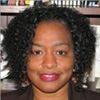- Delivery Method Online
- Professional Certificate
- 24hrs Suggested Study Time
- 3 Months Access
- Tutor Support
- Study On Any Device
- 26703 Students
SQL Fundamentals

Gain a solid working knowledge of the most powerful and widely used database programming language.
Learn the key concepts of Structured Query Language (SQL), and gain a solid working knowledge of this powerful and universal database programming language.
In this course, you'll learn about the basic structure of relational databases and how to read and write simple and complex SQL statements and advanced data manipulation techniques. First, you'll learn about the traditional database structure, the structure and history of the relational database, and what structured query language (SQL) is and how it relates to the relational-database structure.
Next, you'll discover how to use SQL to sort and retrieve data from tables and how to use SQL to filter retrieved data. You'll learn how to reformat retrieved data with calculated fields and how to merge columns and create alternate names for columns.You'll also learn how to gather significant statistics from data using aggregate functions, and you'll see how to extract data from multiple tables simultaneously using joins and subqueries. In addition, you'll learn how to manipulate data using the INSERT, UPDATE, and DELETE statements.
We'll also cover how to use SQL to create and maintain tables, and you'll learn how to create and use views to simplify complex queries, summarise data, and manipulate data stored in tables. You'll discover how transaction processing, constraints, and indexes are implemented in SQL. And finally, you'll discover how stored procedures, triggers, and cursors are implemented in SQL.
By the end of this course, you'll have a solid working knowledge of structured query language. You'll feel confident in your ability to write SQL queries to create tables; retrieve data from single or multiple tables; delete, insert, and update data in a database; and gather significant statistics from data stored in a database.
Courses are delivered to you through expertly executed lessons, online instruction and interaction with like-minded students. Our courses are designed to deliver all of the benefits of studying in a classroom whilst giving you the flexibility to study at a time and place to suit your needs. You can access your classroom 24/7 from any device with an internet connection.
This course has a 3 month duration. You'll complete comprehensive lessons, quizzes and assignments before submitting your final exam at the end of the course to achieve your certificate. Courses must be completed within the 3 month access period.

Cecelia Allison
Cecelia Allison is an experienced software tester and technicalspecialist with more than 15years of hands-on experience using and teaching SQL. She is also a technical writer, a published author, and a university instructor. Sheholds a Bachelor of... Read more
Read Cecelia Allison's ProfileFrequently Asked Questions
What people are saying about our courses
The Learning Environment
From the moment that you enrol in the SQL Fundamentals you will become an integral part of our learning community. You'll find yourself with the freedom to learn at a speed that suits you, on any device, from anywhere in the world. Achieving your career goals no longer has to mean compromising family and work commitments.
Ready to get started?
Enrol NowOur Values
Learn At Your Own Pace
We believe in personalised learning. That's why we provide all the tools and support you need to succeed at your own pace. With flexible learning, you'll stay motivated and retain more information. Plus, you can balance your studies with work and family commitments to make your dreams a reality.
We Won't Break The Bank
Education should be accessible to anyone who wants to learn. That's why we offer some of the most competitive prices in the industry with payments plans for just $25 per week. Investing in your future is a smart choice and doesn’t have to break the bank.
Industry-Led Courses
There's no better way to learn than from experts with years of experience in your field. That's why each of our 200+ industry-led courses are designed to give you a real-life perspective on your industry. With our expert mentors, you'll learn from people who have a wealth of knowledge and experience, and who are passionate about sharing it with you.
Get The Personal Support You Deserve
At Vibe Learning, we're real people who are dedicated to providing you with personal support every step of the way. Our industry experts are not only professional and knowledgeable but also incredibly passionate about sharing their expertise with you. With their guidance, you'll gain invaluable insights and practical knowledge to help you succeed.
Still looking?
Check out the following courses related to SQL Fundamentals:





